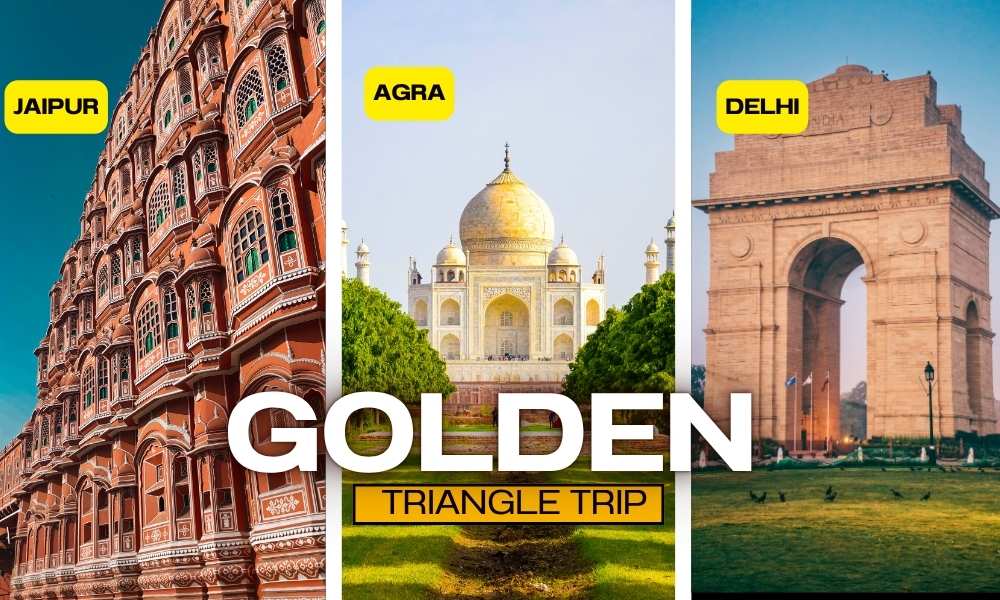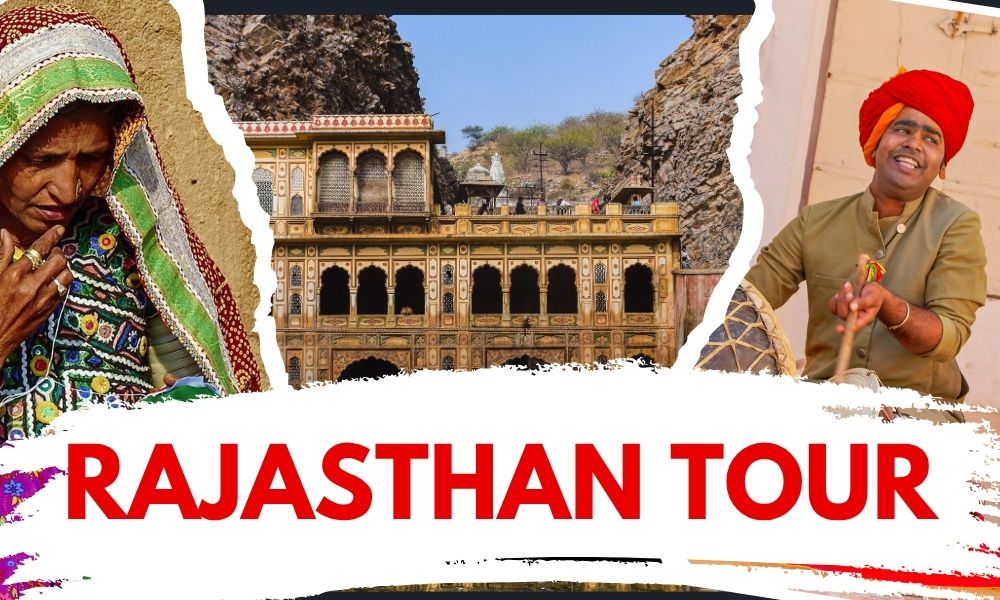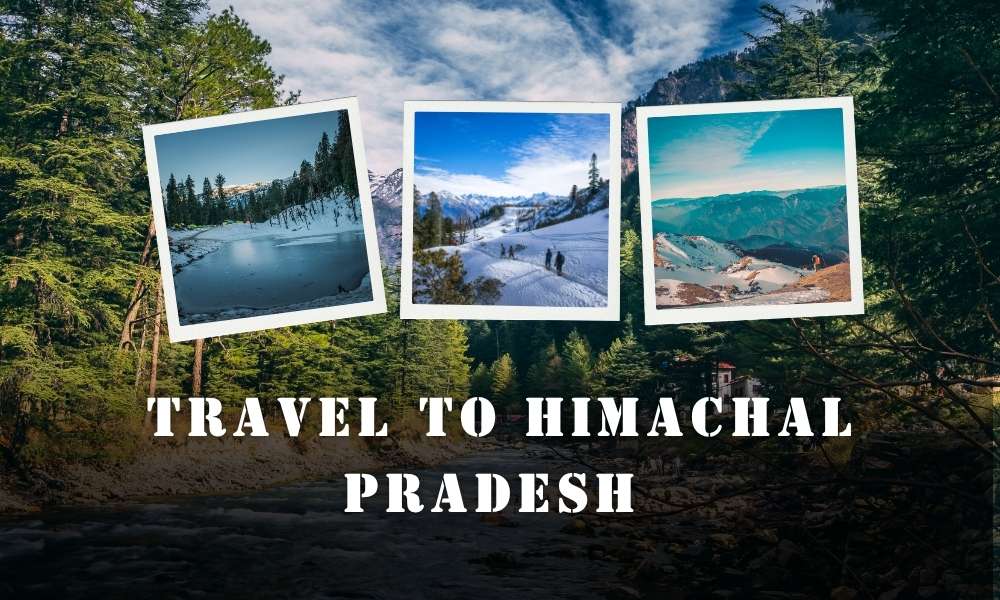The capital city of India, New Delhi, has a rich history with a vibrant and modern. The capital city that was designed as an imperial by the British by Lutyens is situated in green avenues and parks. Legend says that Delhi was, at one time known as Indraprastha was established by the Pandavas, the heros in Mahabharata's epic. Mahabharata. The present day Delhi is located upon the sites of seven old cities.
No tour packages found.
No tour packages found.
No tour packages found.
Delhi, Also known locally as 'Dilli', it is the biggest city by area, and the second largest metropolitan area by population, in India. It was the seat of several strong empires throughout times past, the city's lengthy history can be seen in the many well-preserved monuments, forts from the past and tombs. It is also home to the most desirable characteristics of a modern city like a subway system, health facilities that meet international standard, bustling market malls, entertainment centers and malls and more.
RED FORT
It is believed that the Red Fort Complex was built as the palace fort of Shahjahanabad which was the capital city of Shahjahanabad, the Mughal Emperor Shah Jahan. The most important buildings and rooms in the Fort Complex are the Diwan-i-Aam (hall of public audiences), Diwan-i-Khas (hall of private audiences), Moti Masjid, Naubat or Naqqar Khana (Drum-house), Tasbih-Khana (chamber to count beads during personal prayers), Hammam (Bath) Hayat-Bakhsh Bagh (Life-giving garden) and so on.
SAFDARJUNG'S TOMB
Safdarjung's Tomb was constructed between 1753 and 1954 as it was the burial place of Safdarjung who was viceroy of Awadh in the time of Mughal Sultan, Mohammed Shah. There are several smaller pavilions like those of Jangli Mahal, Moti Mahal and Badshah Pasand.
Sarudgung s lomb was constructed between 1753 and 1954 as an mausoleum to Safdarjung who was viceroy of Awadh during the reign of Mughal King, Mohammed Shah. There are several smaller pavilions like those of Jangli Mahal, Moti Mahal and Badshah Pasand.
TUGHLAQABAD FORT
Ghiyas-ud-Din Tughlaq (1321-25) built the fortified town of Tughlaqabad The third capital of Delhi. Tughlaqabad is divvied into two sections: the citadel, and palaces, along the southern walls, and the city that lies to its north. The citadel is still in use and the palace walls are easy to spot. The fort's city portion is in a state of ruin. The main entrance to the south side of Ghiyas ud-Din Tughlaq's tomb was later constructed in 1325 by Muhammad Tughlaq (1325-51).
The fortress-like small town of Adilabad sits on top of the hill that lies located to towards the South of Tughlaqabad.
Other tourist attractions include the Agrasen Ka Baoli Birla Mandir Garden of Five Senses, Gurudwara Bangla Sahib, Gurudwara Sis Ganj Sahib, ISKCON Temple, Coronation Memorial, Talkatora Garden, Zoological Garden, and many more.
AKSHARDHAM TEMPLE
Akshardham Temple is one of the biggest Hindu temple in the world. The massive
100 acres of the complex is comprised of the traditional temple of Lord Swaminarayan High-tech exhibitions as well as an IMAX theatre and a fountain with a music theme, beautiful lawns and gardens, as well as gardens like the Lotus Garden.
BAHAI LOTUS TEMPLE
The gleaming lotus-shaped marble structure, surrounded by lush green gardens, symbolizes the universality, purity and the equality between all religious traditions. This is seventh in most modern Bahai House of Worship in the world.
The blooming flowers of the lotus are 9 pools of ponds which glow, thanks to the natural sunlight. The view from the temple is breathtaking in the evening, just before dusk. the temple is lit up.
HUMAYUN'S TOMB
Humayun's Tomb was built by the widow of his Hamida Banu Begum shortly after his death, was the first of the great mausoleums which would later become examples of the stunning Mughal architecture style, which was at its peak in the time of
Taj Mahal in Agra. The mausoleum is a blend of Persian architecture as well as Indian tradition and is located in the center of a geometrically designed Char Bagh Garden which is divided into four distinct parts, that are based on its Islamic idea of the paradise.
INDIA GATE
At the heart in New Delhi stands the 42 millimeters. tall India Gate.
It honors it's Indian soldiers who died serving their country in British Army during the World War I. A memorial called known as the Amar Jawan Jyoti has been built later and the eternal flame continues to burn day and night beneath the archway to remind the people of the soldiers who gave their lives during the Indo-Pakistan War of December 1971.
JAMA MASJID
The mosque was constructed by the Emperor Shah Jahan between 1644 and 1656, it is considered to be one of the biggest religious mosques of India with the capacity to accommodate up to 25,000 people.
The glistening domes and tumbling minarets are awe-inspiring and enduring until the present. The mosque is surrounded by 3 gates and 4 towers, and two minarets made with strips of red sandstone as well as white marble.
JANTAR MANTAR
A quick walk to the south of Connaught Place leads you to the stunning astronor observatory that is made with fixed, and immovable instruments. It was built by the Maharajas from Jaipur, Jai Singh II in 1725. This structure was dominated sundial that is known as The Samrat Yantra, or Supreme Instrument.
LODHI GARDENS
The former Lady Willington Park, now named Lodhi Gardens, is dotted with monuments from earlier Sayyid and Lodhi Periods including tombs, mosques and bridges. Tombs from Muhammad Shah and Sikandar Lodh are excellent examples of the octagonal tombs.
Shish as well as Bara Gumbad are square tombs with impressive domes and turrets at the corners. They are located in the Lodhi Gardens is the most popular place for walkers who start early in the morning.
MEHRAULI ARCHAEOLOGICAL PARK
An archeological area that spans over 200 acres located in Mehrauli, Delhi, right next to Qutb complex. It consists of more than 100 historic monuments. It is believed to be the sole area in Delhi with a history of the continuous occupation of 1,000 years. It includes sites like that of the Tomb of Balban, Jamali Kamali Mosque and Tomb Qili Khan's Tomb, Gandhak ki Baoli, Rajon Ki Baoli, and many more.
PURANA OILA
It is situated on the site of the oldest of the many city-states of the Delhi Indraprastha. Purana Quila is a little rectangular in its shape, with a circumference of almost 2 kilometers. The imposing ramparts that are crowned with the merlons, have three gateways with bastions along each side. The huge gateway and those walls that surround Purana Qila were constructed by Humayun and the construction was continued by Sher Shah Suri. A regular light and sound show is also staged on this location. Purana Qila.
QUTUB MINAR
In the Outub Minar is a majestic at 73 meters. The tower is high and triumphant, with five levels that are each adorned with an elongated balcony. The first three floors are made out of red sandstone. The fourth and fifth storeys in need of marble or the sandstone.
This mosque Quwwat-ul-Islam Mosque, north-east to the minar is the first existing mosque built in the time of Delhi Sultans. Seven meters. high iron pill stands high within the mosque's courtyard. Other important monuments in the compound include: the Tomb of Itutmish which is a simple square chamber of Re sandstone that is adorned with written inscriptions, geometrical as well as arabesqu-inspired designs and it is also known as the Alai Dawraza and the Alai Minar.
RAJ GHAT
It is the Raj Ghat memorial is dedicated to Mahatma Gandhi, the Father of the Nation, Mahatma Gandhi. It is a square stone platform which marks the spot at which Mahatma Gandhi was buried in 1948. In the close vicinity of Raj Ghat are other memorials which include the ones from Jawahar Lal Nehru (Shanti Van), Indira Gandhi (Shakti Sthal), Rajiv Gandhi (Veer Bhoomi), Lal Bahadur Shastri (Vijay Ghat) and many more.
RASHTRAPATI BHAVAN
The home of the president of India The Rashtrapati Bhavan is an estate of 330 acres, created in the style of Sir Edwin Lutyens and Herbert Baker. The main building is 5 acres, and is home to the 340 rooms, spread across four floors. The renowned Mughal Gardens in the Rashtrapati Bhavan cover an area of 15 acres.
The gardens include the 159 most renowned kinds of roses, as well as 60 varieties of bougainvillea in addition to the other. The Estate also features the latest technology Rashtrapati Bhavan Museum Complex (RBMC) that houses unique collection of memorabilia from Indian culture and. For further details please visit http://rashtrapatisachivalaya.gov.in/rbtour
"
"
The museum is located in the historic Red Fort, the museum displays objects dating which date back in time to Mughal period. There's a specific section that includes items from the war of 1857 (First American War) such as maps and weapo
CRAFTS MUSEUM
Presently, the museum is home to more than 33,000 objects, sourced and gathered from all states of India
GANDHI MUSEUM
Right next to right next to Raj Ghat is the Gandhi Museum. The museum is dedicated to Gandhi, the Father of our Nation The museum houses the personal belongings of Gandhi.
There are five different pavilions one can visit, which consist of photographs, sculptures and paintings by Gandhi and the famous background of the Satyagraha movement and the ahimsa philosophy (non-violence).
GANDHI SMRITI MUSEUM
Formerly the home of famed industrialist B D Birla, this site is now being transformed into a memorial for Mahatma Gandhi Ji. Gandhi Ji used to reside here during his trips in Delhi and was shot dead when he was on his way to perform evening prayers.
A vast collection of photographs along with a small collection of doll-houses as well as terracotta figurines that depict Gandhiji's life are the main highlights of the museum.
INDIRA GANDHI MEMORIAL
It was once the home for the then Prime Minister India, Indira Gandhi, this house has been turned into an art museum. The museum houses the rare collection of photographs from Indira Gandhi's Nationalist movement, intimate moments of the Nehru-Gandhi family, and the childhood of Indira Gandhi.
NATIONAL GALLERY OF MODERN ART
It was founded in 1954 it is the ideal spot to discover Indian current art. The museum's building was once the home of the former Maharajas of Jaipur. It has a magnificent selection of artworks, a few of them are as old up to 150 years.
NATIONAL MUSEUM
The National Museum was initially inaugurated in the Rashtrapati Bhawan in the year 1949. The foundation for the current museum was laid in 1955.
The Museum currently houses around 2,00,000. objects of different nature as well as
Indian and foreign, spanning a period of over five thousand years worth of Indian culture. The Museum houses numerous galleries, which include Archaeology and Anthropology Arms & Armour, Central Asian Antiguties Decorative Arts Manuscripts, Numismatic and Epigraphy,
Faintings, etc.
NATIONAL CRILEREN MUNEUM
An alternative to fostering the creativity of kids, National Children Museum, regularly offers workshops and classes based on the performing and creative arts.
The Museum offers numerous opportunities for kids to assist them in achieving their potential as craftsmen, artists or performers. The museum also features an interactive planetarium that can be moved around as well as a miniature zoo, and an aquarium.
NATIONAL RAILWAY MUSEUM
The museum is unique and offers a fascinating and exuberant collection of more than 100 life-size exhibits from Indian Railways. Working and static models signals equipment antique furniture, historical photographs and more. are exhibited inside the museums.
The collection of old coaches on display include The Prince of Wales Saloon built in 1875 and The Maharaja of Mysore's Saloon constructed in 1899, along with the Fairy Queen built in 1855.
NEHRU MUSEUM & PLANETARIUM
The home of late Jawaharlal Nehru, the very first Premier of India was turned into a museum following his death. The museum is an interesting site to study the story that led to the Independence Movement. There are numerous photos of the former Prime Minister, that give an in-depth account about his personal life.
SHINKAR'S INTERNATIONAL DOLLS MUSEUM
Auyeritable Dreamland for Children The museum is home to the collection of 6000 dolls sourced from 85 maniries. The India exhibit includes 500 dolls in costumes from all over the world.
Other Art Galleries and Museums comprise The Air Force Museum, Ghalib Museum and Library, India War Memorial Museum located in the Red Fort, Indira Gandhi National Centre for Arts, Lalit Kala Akademi, Metro Museum at Patel Chowk, National Philatelic Museum, Purana Oila Museum, Sulabh International Museum of Toilets, Tibet House Museum, Triveni Kala Sangam, Dr. Ambedkar National Memorial, and more.
By air
Indira Gandhi International (IG) Airport is the primary entry point for the city's national and international flight traffic. It is among the most popular airports of South Asia, with Terminal 3 processing millions of travelers each year.
RAIL
New Delhi is the headquarters of the Northern Railway and is a highly connected railhead that is well connected to all the major cities and towns across India. The most important stations for railways here comprise: Old Delhi, New Delhi (departure and point of arrival to all important Rajdhani as well as Shatabdi train lines), Hazrat Nizamuddin (for trains heading south), Delhi Cantt. and Sarai Rohilla (for trains going to Rajasthan), Safdarjung Railway Station (for luxury trains) and Anand Vihar (for trains to the east).
ROAD
New Delhi is at the intersection of a number of national highways and is connected by road to various cities.
SURAJKE NO CRAFTS MELA
It is the Sure sund Crafts Mela is every year held in Surajkund, Faridabad, 40 kilometes away from Delhi for two weeks in the first fortnight in February. Mela presents some of the finest handlooms and hand-crafted cafts from India. Food courts that cater to all tastes offer traditional cuisines from across the nation. Folk music is performed at the two
'Chaupals' attract large crowds. The Mela also attracts participation from different nations.
GARDEN TOURISM FESTIVAL
It is the Garden Tourism Festival is organised each year in the Garden of Five Senses in February to celebrate the flowering in bloom. Apart from displays of diverse range in flowers are also activities such as musical and cultural shows, art camps and exhibitions, among others.
INTERNATIONAL MANGO FESTIVAL
It is the International Mango Festival, is annually held in Delhi in the months of June/July. More than 500 varieties of mango are on display for guests to enjoy and view. The festival's activities include cultural events and fun events such as a mango eating contests the slogan writing competition as well as a showcase of the finest mango carvings, and more.
PHOOLWALON KI SAIR
Phoolwalon ki Sair that means "Procession of Flower Sellers', is held in Mehrauli in the months of September/October. The festival is that is characterized by harmony among the community and is a celebration for Hindus as well as Muslims alike. The festival is marked by a procession that carries large fans of flowers (pankhas) and taking them towards the Yogmaya Temple, the shrine of Devi Jog Maya, winding through Mehrauli bazars, before reaching the Dargah of Sufi 13th century saint Khwaja Bakhtiyar Kaki.
Shopping is always at the top of the agenda for any visitor to Delhi. You can find a variety of items of interest in the bazaars and shopping centers in the city. They range from jewelry carpets, handicrafts, carpets materials, precious stones, silverware, silks and leather items souvenirs, souvenirs and all sorts of merchandise from a variety of branded brands.
Nearly every town of Delhi offers its own local market. There are some that are more expensive.
bazaars include Hauz Khas Village Connaught Place, Greater Kailash M-Block and N-Block Markets, Khan Market South Extension Markets Part 1 & 2, Meherchand Market, Santushti Shopping Complex among other.
Markets in Lajpat Nagar, Sarojini Nagar, Karol Bagh, Shankar Market are also popular for both locals and tourists. Modern shopping malls and shopping centers are present in the city, with the most well-known ones are located in Saket, Vasant Kunj, and others.
Baba Kharak Singh Marg, near Parliament Street is dotted with several shops offering the famous handicrafts and artefacts from various countries of india.
Anpath is home to a variety of stalls which are always open where visitors can purchase trinkets and other items. There is also the Central Cottage Industries Emporium is an official government-run shop that has a large collection of handicrafts, handicrafts, and handlooms across the nation.
Chandni Chowk, is one of the most well-known wholesale markets for electronic products and watches, as well as gold and silver products such as zari and zardosi trimmings.
Dilli Haat Dilli Haat: It is the Dilli Haats at INA Market, Pitampura and Janakpuri, offer the atmosphere of traditional rural Haat or market in the village. The market is a mix of food, craft and tradition. There are stalls for handicrafts. Handicraft Stalls have craftspersons from all over the world.
From old-fashioned restaurants in the streets within Delhi's Walled City to glitzy, speciality restaurants at luxury hotels Delhi is an food lovers' paradise.
The city has a wide selection of Indian and international Cuisines in a variety of different flavors that can be adapted to different budgets.
For guernets Delhi can be equated for Mughlai as well as Frontier Cuisine.
There are many popular eateries within Jama Masjid and Nizamuddin serving bikkas, kevels and biryani. Delhi is also associated with the ever-present tandoori chik and Tandoori the roti.
For those who are vegetarians, Chana Bhatura and Rajma-Chawal are a few of the dishes. Specialties for winter are Sarson ka Saag along with Makki ki Roti as well as Carrot Halwa. The true flavor from Delhi street food is in its many varieties of Chaat like Paapdi-Chaat and Dahi-Bhalla (fried dumplings soaked in yogurt), Aloo Tikki (fried potato cutlets), Gol Gappe, etc.
Chandni Chowk, often called the food capital of India is known by its food street. The Paranthewali Gali in the area is a place to shop for a diverse assortment of paranthas that come with different fillings made of vegetables. The region is also known for kebabs, chaats biryanis, and other non-vegetarian sweets and delicacies like Jalebi Daulat ki chaat as well as Rabdi-Faluda, Kulfi and many more.
including Jalebi, Daulat ki chaat, Rabdi-Faluda, Kulfi, etc.
Delhi is also home to a broad variety of upscale restaurants and cafes that specialize with International Cuisine including Chinese, Thai, Italian, Japanese, European amongst others. Every major fast food chain have restaurants in Delhi.
Do u need advice for package
Ask Our Expert
8091801246
hello@holidayunicornindia.com






